- Table of Content
- 1.STCE annual me...
- 2.Looking for a ...
- 3.Review of sola...
- 4.The Internatio...
- 5.PROBA2 Observa...
- 6.Geomagnetic Ob...
- 7.The SIDC Space...
- 8.Review of iono...
2. Looking for a colleague
3. Review of solar and geomagnetic activity
4. The International Sunspot Number by Silso
5. PROBA2 Observations (8 Jun 2020 - 14 Jun 2020)
6. Geomagnetic Observations at Dourbes (8 Jun 2020 - 14 Jun 2020)
7. The SIDC Space Weather Briefing
8. Review of ionospheric activity (8 Jun 2020 - 14 Jun 2020)
STCE annual meeting in COVID-19 times
It is June, the time of the year of the annual STCE meeting. But COVID-19 forces us to rethink the concept.
We present you a digital and clickable poster-meeting with STCE colleagues in their working environment.
Find out what they have been doing during the confinement, what keeps them going and motivated.
To enter the meeting room, click here: http://www.stce.be/annualmeeting/2020/poster_1.html
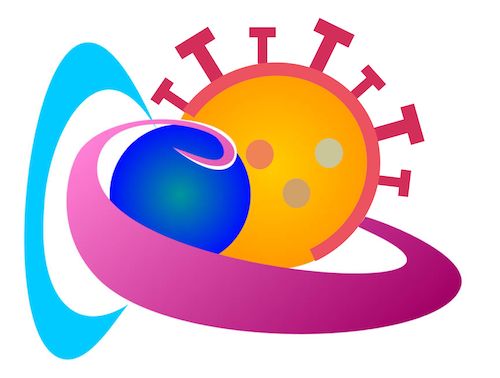
Enjoy!
Looking for a colleague
Royal Observatory of Belgium (Brussels) - Vacancy for a Collaborator in Space Weather Services
The Royal Observatory of Belgium hosts the SIDC Regional Warning Center, a leading European space weather forecast center and partner in the Space Safety Program (S2P) of the European Space Agency ESA. Recently, ICAO (International Civil Aviation Organisation) selected the PECASUS consortium in which the SIDC is a key partner, as 1 of the 3 worldwide centers. In this frame, the SIDC delivers since November 2019 24h/7d space weather services to the civil aviation actors worldwide.
To assure the successful continuation of our operations in this competitive international context, the Royal Observatory of Belgium seeks a collaborator for the further development and support of its space weather services.
A more detailed job description and application conditions can be found at https://www.astro.oma.be/en/information/jobs/.
Candidates can contact Dr. Jesse Andries (jesse.andries@oma.be) for additional information.
Applications are welcome till July 5, 2020 included.
Review of solar and geomagnetic activity
SOLAR ACTIVITY
Active region (NOAA 2765), a beta region and the only region present, decayed into an alpha region in the second half of the week. It produced a few B flares only the first two days of the week. The GOES Xray background flux stayed between the A2 and A4 level. There were no Earth directed CMEs and the greater than 10 MeV proton flux was at nominal level.
GEOMAGNETIC ACTIVITY
The solar wind, registered by DSCOVR, was nominal to slightly enhanced until June 12, probably due to intermittent influence from the patchy positive polarity coronal holes linked to the north crown coronal hole. From June 12 onwards, the solar wind was nominal. Solar wind speed varied between about 290 and 500 km/s and the Interplanetary Magnetic Field (IMF) was oriented away from the Sun, with a magnitude between about 0 and 8 nT. The Bz component of the IMF was below -5 nT between 17:30 and 19:15 UT on June 7, but the local K index did not exceed 3 (K Dourbes), and the planetary K index did not exceed 4 (NOAA Kp).
The International Sunspot Number by Silso
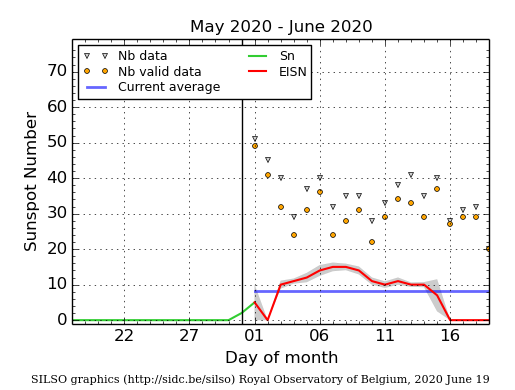
The daily Estimated International Sunspot Number (EISN, red curve with shaded error) derived by a simplified method from real-time data from the worldwide SILSO network. It extends the official Sunspot Number from the full processing of the preceding month (green line). The plot shows the last 30 days (about one solar rotation). The horizontal blue line shows the current monthly average. The yellow dots gives the number of stations that provided valid data. Valid data are used to calculate the EISN. The triangle gives the number of stations providing data. When a triangle and a yellow dot coincide, it means that all the data is used to calculate the EISN of that day.
PROBA2 Observations (8 Jun 2020 - 14 Jun 2020)
Solar Activity
Solar flare activity was very low during the week.
In order to view the activity of this week in more detail, we suggest to go to the following website from which all the daily (normal and difference) movies can be accessed: https://proba2.oma.be/ssa
This page also lists the recorded flaring events.
A weekly overview movie can be found here (SWAP week 533). http://proba2.oma.be/swap/data/mpg/movies/weekly_movies/weekly_movie_2020_06_08.mp4
Details about some of this week's events can be found further below.
If any of the linked movies are unavailable they can be found in the P2SC movie repository here https://proba2.oma.be/swap/data/mpg/movies/
Tuesday Jun 09
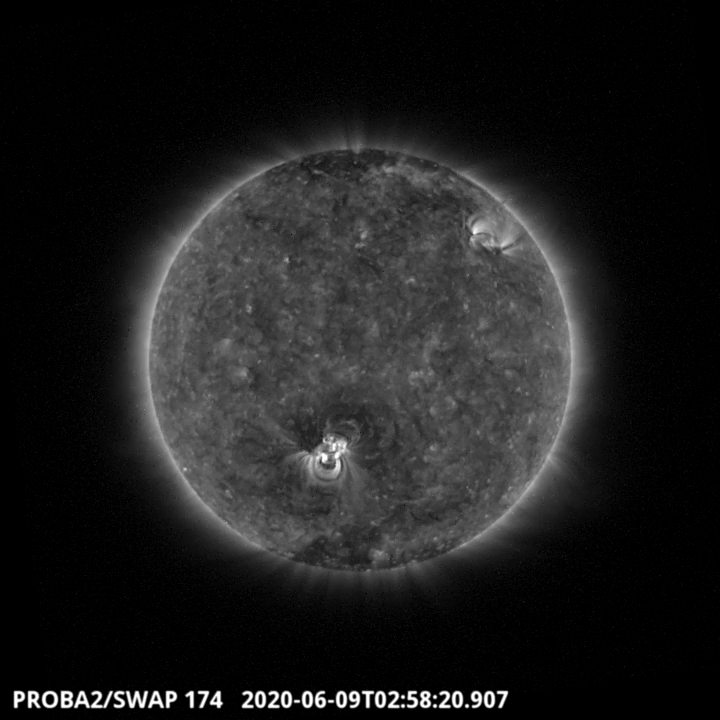
Eruption in the South East part of the solar disk around 02:58 UT. It corresponds to a B1.9 class flare from the single sunspot region of the week (NOAA 2765) - SWAP image
Find a movie of the event here (SWAP movie) http://proba2.oma.be/swap/data/mpg/movies/20200609_swap_movie.mp4
The SIDC Space Weather Briefing
The Space Weather Briefing presented by the forecaster on duty from June 7 to 14. It reflects in images and graphs what is written in the Solar and Geomagnetic Activity report.
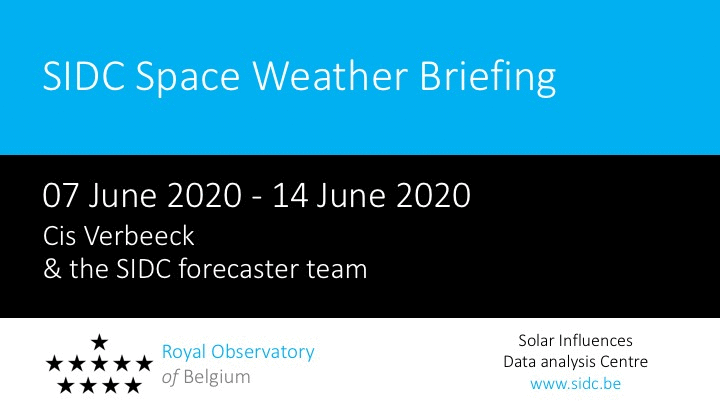
The pdf-version: http://www.stce.be/briefings/20200615_SWbriefing.pdf
The automatically running presentation: http://www.stce.be/briefings/20200615_SWbriefing.ppsm
Review of ionospheric activity (8 Jun 2020 - 14 Jun 2020)
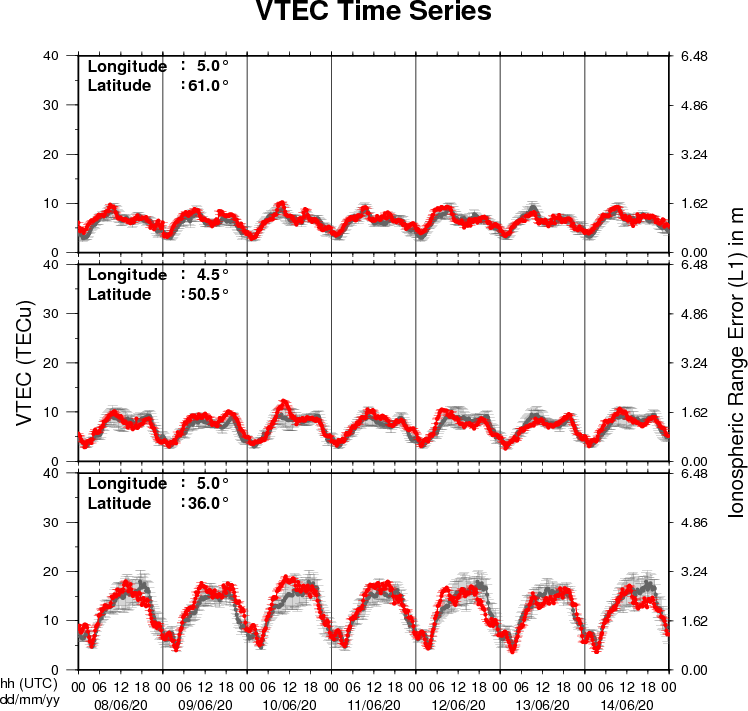
The figure shows the time evolution of the Vertical Total Electron Content (VTEC) (in red) during the last week at three locations:
a) in the northern part of Europe(N61°, 5°E)
b) above Brussels(N50.5°, 4.5°E)
c) in the southern part of Europe(N36°, 5°E)
This figure also shows (in grey) the normal ionospheric behaviour expected based on the median VTEC from the 15 previous days.
The VTEC is expressed in TECu (with TECu=10^16 electrons per square meter) and is directly related to the signal propagation delay due to the ionosphere (in figure: delay on GPS L1 frequency).
The Sun's radiation ionizes the Earth's upper atmosphere, the ionosphere, located from about 60km to 1000km above the Earth's surface.The ionization process in the ionosphere produces ions and free electrons. These electrons perturb the propagation of the GNSS (Global Navigation Satellite System) signals by inducing a so-called ionospheric delay.
See http://stce.be/newsletter/GNSS_final.pdf for some more explanations ; for detailed information, see http://gnss.be/ionosphere_tutorial.php
